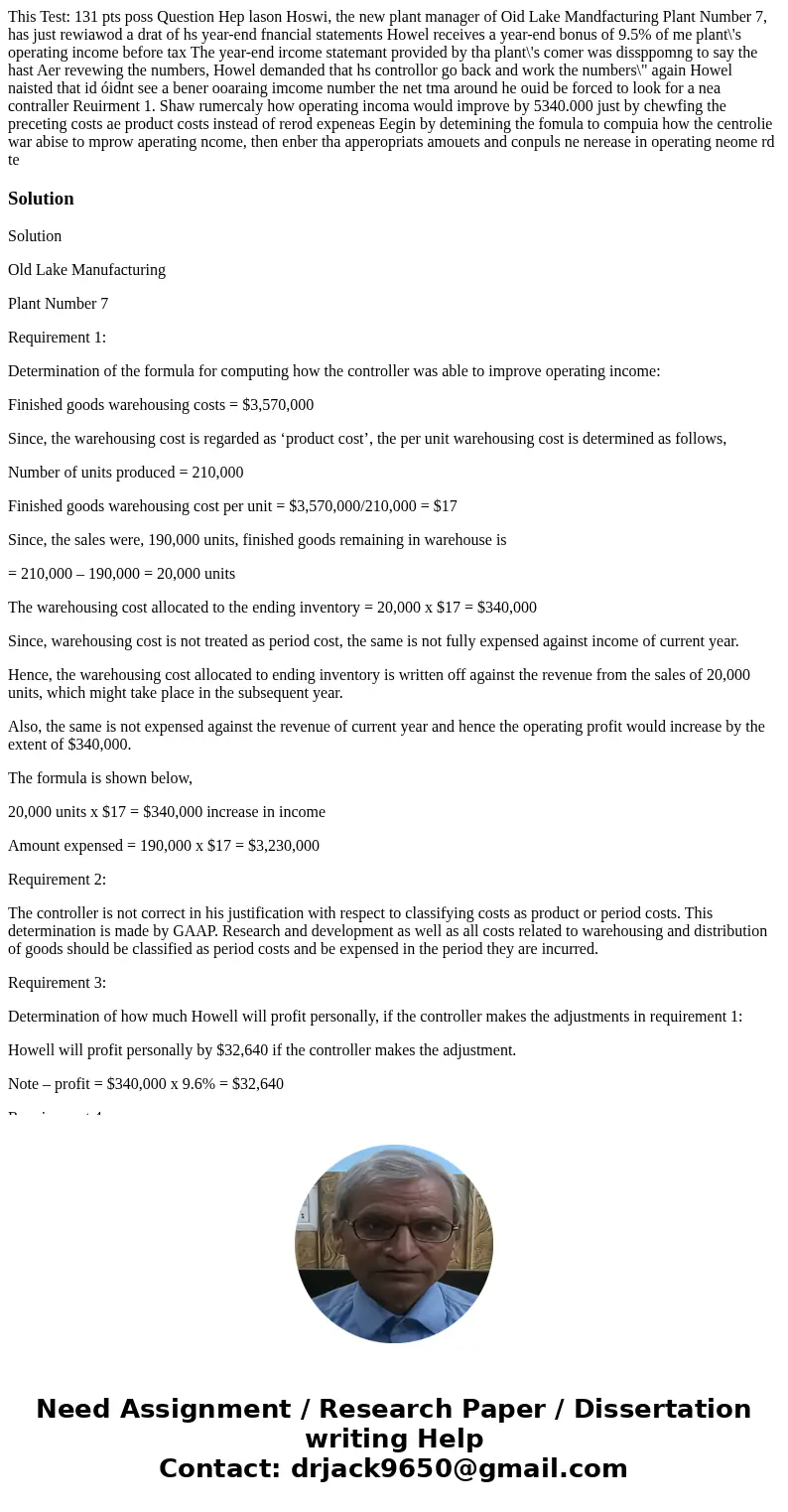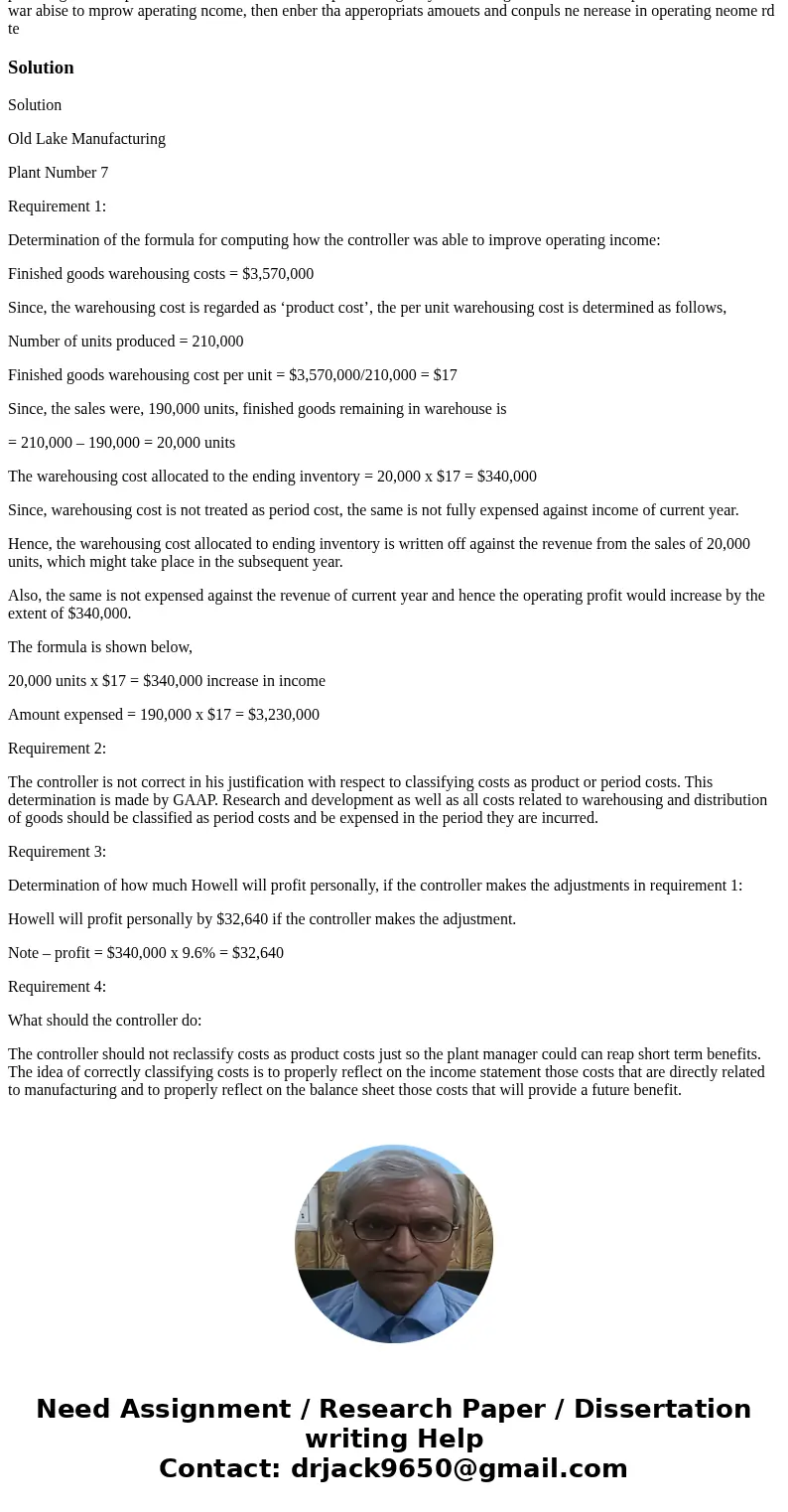This Test 131 pts poss Question Hep lason Hoswi the new plan
Solution
Solution
Old Lake Manufacturing
Plant Number 7
Requirement 1:
Determination of the formula for computing how the controller was able to improve operating income:
Finished goods warehousing costs = $3,570,000
Since, the warehousing cost is regarded as ‘product cost’, the per unit warehousing cost is determined as follows,
Number of units produced = 210,000
Finished goods warehousing cost per unit = $3,570,000/210,000 = $17
Since, the sales were, 190,000 units, finished goods remaining in warehouse is
= 210,000 – 190,000 = 20,000 units
The warehousing cost allocated to the ending inventory = 20,000 x $17 = $340,000
Since, warehousing cost is not treated as period cost, the same is not fully expensed against income of current year.
Hence, the warehousing cost allocated to ending inventory is written off against the revenue from the sales of 20,000 units, which might take place in the subsequent year.
Also, the same is not expensed against the revenue of current year and hence the operating profit would increase by the extent of $340,000.
The formula is shown below,
20,000 units x $17 = $340,000 increase in income
Amount expensed = 190,000 x $17 = $3,230,000
Requirement 2:
The controller is not correct in his justification with respect to classifying costs as product or period costs. This determination is made by GAAP. Research and development as well as all costs related to warehousing and distribution of goods should be classified as period costs and be expensed in the period they are incurred.
Requirement 3:
Determination of how much Howell will profit personally, if the controller makes the adjustments in requirement 1:
Howell will profit personally by $32,640 if the controller makes the adjustment.
Note – profit = $340,000 x 9.6% = $32,640
Requirement 4:
What should the controller do:
The controller should not reclassify costs as product costs just so the plant manager could can reap short term benefits. The idea of correctly classifying costs is to properly reflect on the income statement those costs that are directly related to manufacturing and to properly reflect on the balance sheet those costs that will provide a future benefit.


 Homework Sourse
Homework Sourse